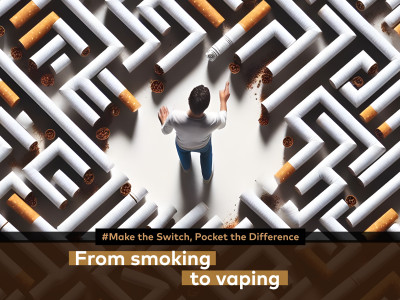The UKECRF is an initiative developed by Cancer Research UK in partnership with Public Health England and the UK Centre for Tobacco and Alcohol Studies. The UKECRF looks at new studies on electronic cigarettes and provides a critical overview of each of them. It brings together experts to discuss emerging evidence about e-cigarettes.
One hundred and seventy-three 13-18year olds, who reported vaping during the previous month, were recruited from the San Francisco Bay Area using advertisements posted on social media and in the community and by word-of-mouth.
Eligible participants were scheduled for an initial, in-person session during which they provided informed consent, completed self-report measures and provided saliva and urine samples for biomarker testing.
UKECRF reported:
Study aims
This U.S study aimed to determine the most accurate self-reported measures for estimating nicotine exposure among adolescents (ages 13-18). Participants (n = 173) that had used an e-cigarette in the past month and had at least 10 lifetime uses, were asked about their frequency of use. Nicotine exposure was measured using salivary cotinine levels. Researchers evaluated three measures of e-cigarette dependency: The E-cigarette Addiction Severity Index (EASI), Heaviness of Vaping Index (HVI) and Penn State Electronic Cigarette Dependence Index (ECDI). Correlations between frequency of use and dependency measures, and cotinine levels were calculated.
Key findings
- Most (85.5%) respondents used their e-cigarettes less than daily, mean days per month = 15.4. When restricted to exclusive e-cigarette users, 89.6% used their e-cigarettes less than daily
- 26.6% of participants reported smoking a cigarette in the past 30 days and 5.0% reported smoking a cigarette in the past 24 hours
- 80.3% of participants reported that some or all their e-cigarette liquid contained nicotine (77.1% in exclusive e-cigarette users)
- Sessions per month (SPM), days per month, sessions per day (SPD) all showed a moderate positive correlation with cotinine levels, r=0.59, r=0.58 and r=0.57, respectively. The three dependency measures, EASI (r=0.51), HVI (r=0.50) and ECDI (r=0.50) also showed moderate positive correlations
- All measures remained moderately positively correlated with cotinine levels when restricting to e-cigarette only users
Study Limitations
- The study did not test whether correlations were significantly different from one another or significantly different across dual users and exclusive vapers. Therefore, we cannot determine whether one measure of e-cigarette dependence is better than the other or whether one might be better used among certain groups
- Biomarkers of nicotine and tobacco exposure were only taken once so do not give an indication of participants exposure levels over time
- While cotinine levels are a good indicator of recent nicotine exposure they may not be appropriate to measure addiction. High cotinine levels may reflect combustible cigarette use rather than e-cigarette use, and the researchers could only validate 24h tobacco abstinence among self-reported exclusive vapers
- The correlations may not be applicable outside the US setting because nicotine regulation of e-cigarettes differs across countries and therefore may affect nicotine exposure
- This was a relatively small sample size and participants may not be representative of the wider adolescent vaping population
Resources:
- “Measuring e-cigarette addiction among adolescents” by Vogel, Prochaska, and Rubinstein – [link]
Dave Cross
Journalist at POTVDave is a freelance writer; with articles on music, motorbikes, football, pop-science, vaping and tobacco harm reduction in Sounds, Melody Maker, UBG, AWoL, Bike, When Saturday Comes, Vape News Magazine, and syndicated across the Johnston Press group. He was published in an anthology of “Greatest Football Writing”, but still believes this was a mistake. Dave contributes sketches to comedy shows and used to co-host a radio sketch show. He’s worked with numerous vape companies to develop content for their websites.
Join the discussion
Parliament Fears Two
The Department for Environment, Food and Rural Affairs faced questions from a Conservative MP and, oddly, a member of the Department for Environment, Food and Rural Affairs
Harm Reduction For The Rich
The United Kingdom risks becoming a harm reduction country only for the wealthy, according to Michael Landl of the World Vapers’ Alliance
Sacrificing Health For 2p Cut
Tory Government alienates vaping voters with its mission to cut tax by an unaffordable 2p to attract voters by placing a tax on vape products in the forthcoming budget
Scotland Announces Single-Use Vape Action
A ban on the sale and supply of single-use vapes in Scotland is due to come into effect on 1 April 2025, under proposed legislation published today












